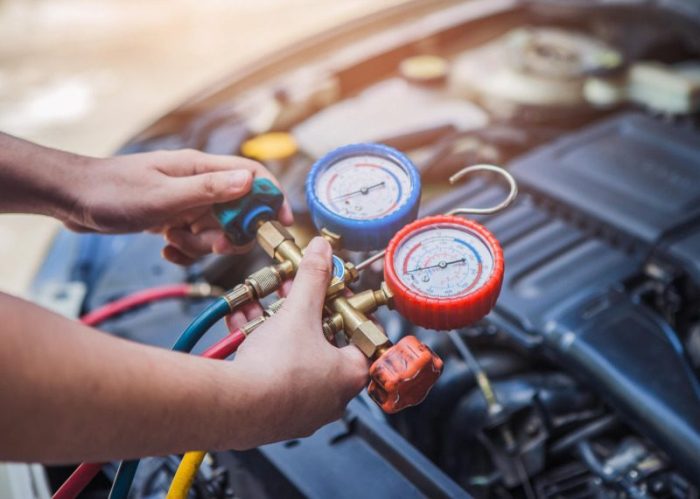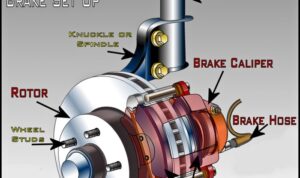As How to troubleshoot car AC issues takes center stage, this opening passage beckons readers into a world crafted with good knowledge, ensuring a reading experience that is both absorbing and distinctly original.
When your car’s AC system starts acting up, it can be both frustrating and inconvenient. Understanding how to troubleshoot these issues can save you time and money, ensuring you stay cool on the road.
Understanding Car AC System: How To Troubleshoot Car AC Issues

The air conditioning (AC) system in a car is a complex system that ensures a comfortable driving experience, especially during hot weather. Understanding the components of a car AC system and how it works can help in diagnosing and troubleshooting any issues that may arise.
Components of a Car AC System:
- Compressor: The compressor is responsible for pressurizing and circulating the refrigerant throughout the AC system.
- Condenser: The condenser helps dissipate heat from the refrigerant, turning it from a gas to a liquid.
- Evaporator: The evaporator cools the air by removing heat from it as the refrigerant evaporates.
- Expansion Valve: The expansion valve regulates the flow of refrigerant into the evaporator.
- Refrigerant: The refrigerant is the substance that absorbs and releases heat to cool the air.
How the AC System Works in a Vehicle:
- The compressor pressurizes the refrigerant, turning it into a high-pressure gas.
- The high-pressure gas flows to the condenser, where it releases heat and becomes a high-pressure liquid.
- The liquid refrigerant travels to the expansion valve, which regulates its flow into the evaporator.
- In the evaporator, the liquid refrigerant evaporates, absorbing heat from the air passing through it.
- The cool air is then blown into the car’s cabin, providing a comfortable temperature for the occupants.
Common Reasons for AC Issues in Cars:
- Refrigerant Leaks: Leaks in the AC system can lead to a loss of refrigerant, affecting the cooling performance.
- Compressor Issues: Problems with the compressor, such as failure or damage, can result in inadequate cooling.
- Condenser Blockage: Blockages in the condenser can restrict airflow and hinder heat dissipation.
- Electrical Problems: Issues with electrical components like relays or switches can disrupt the AC system’s operation.
- Evaporator Problems: Malfunctions in the evaporator can impact the cooling efficiency of the AC system.
Common Car AC Problems

Car air conditioning systems can experience a variety of issues that can affect their performance. It is essential for car owners to be aware of these common problems in order to address them promptly and prevent further damage to the AC system.
Low Refrigerant Levels
One of the most common issues with car AC systems is low refrigerant levels. This can lead to reduced cooling capacity and inefficient operation of the AC system. Symptoms of low refrigerant levels include:
- Weak airflow from vents
- Warm air blowing from vents
- Audible hissing or bubbling noises
It is important to differentiate between low refrigerant levels and other AC issues, as addressing this problem specifically requires adding refrigerant to the system. Other issues may have different solutions.
Compressor Failure
Another common problem with car AC systems is compressor failure. The compressor is responsible for circulating refrigerant through the system to cool the air. Symptoms of compressor failure include:
- Lack of cold air from vents
- Loud noises when the AC is turned on
- Visible leaks around the compressor
Compressor failure can be a costly repair, but it is essential for the proper functioning of the AC system.
When it comes to the latest trends in automotive technology, Honda is not lagging behind. The integration of AI technology in Honda cars has revolutionized the driving experience. From voice recognition systems to advanced driver-assist features, Honda’s AI technology in cars is setting new standards in the industry.
With the ability to learn and adapt, these smart systems enhance safety and provide a more personalized driving experience for users.
Electrical Issues, How to troubleshoot car AC issues
Electrical problems can also impact the performance of a car’s AC system. These issues can manifest in various ways, such as:
- AC not turning on at all
- Intermittent cooling or airflow
- Faulty AC controls
Identifying and addressing electrical issues promptly is crucial to ensure the AC system operates efficiently.
Discover the latest advancements in automotive technology with Honda’s AI technology in their vehicles. From voice recognition to predictive maintenance, Honda’s AI technology in cars is revolutionizing the driving experience. With features like adaptive cruise control and collision avoidance systems, Honda is at the forefront of integrating AI into their vehicles for enhanced safety and convenience.
Troubleshooting Steps

When dealing with car AC problems, it is crucial to follow a systematic approach to identify and resolve issues efficiently. Below are the step-by-step guidelines to troubleshoot common car AC problems.
Checking for Refrigerant Leaks
Refrigerant leaks are a common issue that can lead to poor cooling performance in the car AC system. Here’s how you can check for refrigerant leaks:
- Start by visually inspecting the AC components, such as hoses, connections, and the compressor, for any signs of oil or refrigerant leaks.
- Use a UV dye in the refrigerant system and use a UV light to detect any leaks. The dye will glow under the UV light, making it easier to identify the source of the leak.
- If you suspect a leak in the evaporator or condenser, consider using a refrigerant leak detector to pinpoint the exact location of the leak.
- Once you have identified the leak, repair or replace the damaged component and recharge the system with the appropriate amount of refrigerant.
Inspecting AC Compressor Functionality
The AC compressor plays a vital role in the cooling process of the AC system. Here’s how you can inspect the functionality of the AC compressor:
- Start the car and turn on the AC system. Listen for any unusual noises coming from the compressor, such as grinding or squealing sounds, which may indicate a malfunction.
- Check the compressor clutch to ensure it engages and disengages properly when the AC is turned on and off. A faulty clutch can prevent the compressor from operating efficiently.
- Use a pressure gauge to measure the pressure in the AC system. Low pressure may indicate a compressor issue, while high pressure could point to a restriction in the system.
- If you suspect a problem with the compressor, consider consulting a professional mechanic to diagnose and repair the issue effectively.
DIY Solutions

When it comes to fixing minor AC issues in cars, there are some DIY tips that can help you get your system back up and running smoothly. From recharging the AC system with refrigerant to cleaning or replacing AC filters, here are some solutions you can try on your own.
Recharging the AC System with Refrigerant
If your car’s AC is blowing warm air, it might be time to recharge the system with refrigerant. Here’s how you can do it yourself:
- Purchase a refrigerant recharge kit that is compatible with your car’s make and model.
- Locate the low-pressure service port in your car’s AC system. This port is usually located on the larger of the two metal pipes coming out of the compressor.
- Attach the recharge hose from the kit to the low-pressure service port.
- Start the car and turn the AC to the maximum setting.
- Follow the instructions on the recharge kit to add the correct amount of refrigerant to the system.
- Disconnect the recharge hose and check the AC system for cold air.
Cleaning or Replacing AC Filters
Dirty or clogged AC filters can restrict airflow and reduce the efficiency of your car’s AC system. Here’s how you can clean or replace the filters for better performance:
- Locate the cabin air filter, which is usually found behind the glove compartment or under the dashboard.
- Remove the filter and inspect it for any dirt or debris.
- If the filter is dirty, gently clean it with a vacuum or wash it with soap and water. Make sure it is completely dry before reinstalling it.
- If the filter is damaged or too dirty to clean, replace it with a new one following the manufacturer’s recommendations.
- Check and replace the engine air filter as well, as a dirty filter can affect the overall performance of the AC system.
When to Seek Professional Help

When it comes to your car’s AC system, there are certain signs that indicate the need for professional repair services. Ignoring these signs can lead to further damage and costly repairs down the line. It is crucial to know when it’s time to seek help from a certified mechanic.
Signs that Indicate the Need for Professional AC Repair
- Weak or warm air blowing from the vents
- Foul odor coming from the AC system
- Loud or unusual noises when the AC is turned on
- Visible leaks or moisture around the AC components
Importance of Timely Maintenance and Repairs for the AC System
Regular maintenance and timely repairs are essential for keeping your car’s AC system in optimal condition. Neglecting minor issues can lead to major malfunctions and costly repairs in the future. By addressing problems promptly, you can ensure the longevity and efficiency of your AC system.
Benefits of Consulting a Certified Mechanic for AC Issues
- Expertise: Certified mechanics have the knowledge and experience to accurately diagnose and repair AC problems.
- Quality Repairs: Professional technicians use advanced tools and techniques to ensure that repairs are done correctly.
- Warranty Protection: Getting your AC system serviced by a certified mechanic can help preserve any existing warranties on the components.
- Prompt Service: Professional repair services can get your AC system back up and running quickly, minimizing downtime.
Outcome Summary
In conclusion, mastering the art of troubleshooting car AC issues can make a significant difference in ensuring your comfort during drives. By following the steps Artikeld in this guide, you can diagnose and potentially resolve common AC problems, keeping your vehicle cool and comfortable.
- Steps to clean car headlights: A Complete Guide for Brighter and Safer Driving - January 7, 2025
- Common car engine problems: Top issues, signs, and solutions - January 6, 2025
- DIY car oil change guide: Everything you need to know to save time and money - January 5, 2025







